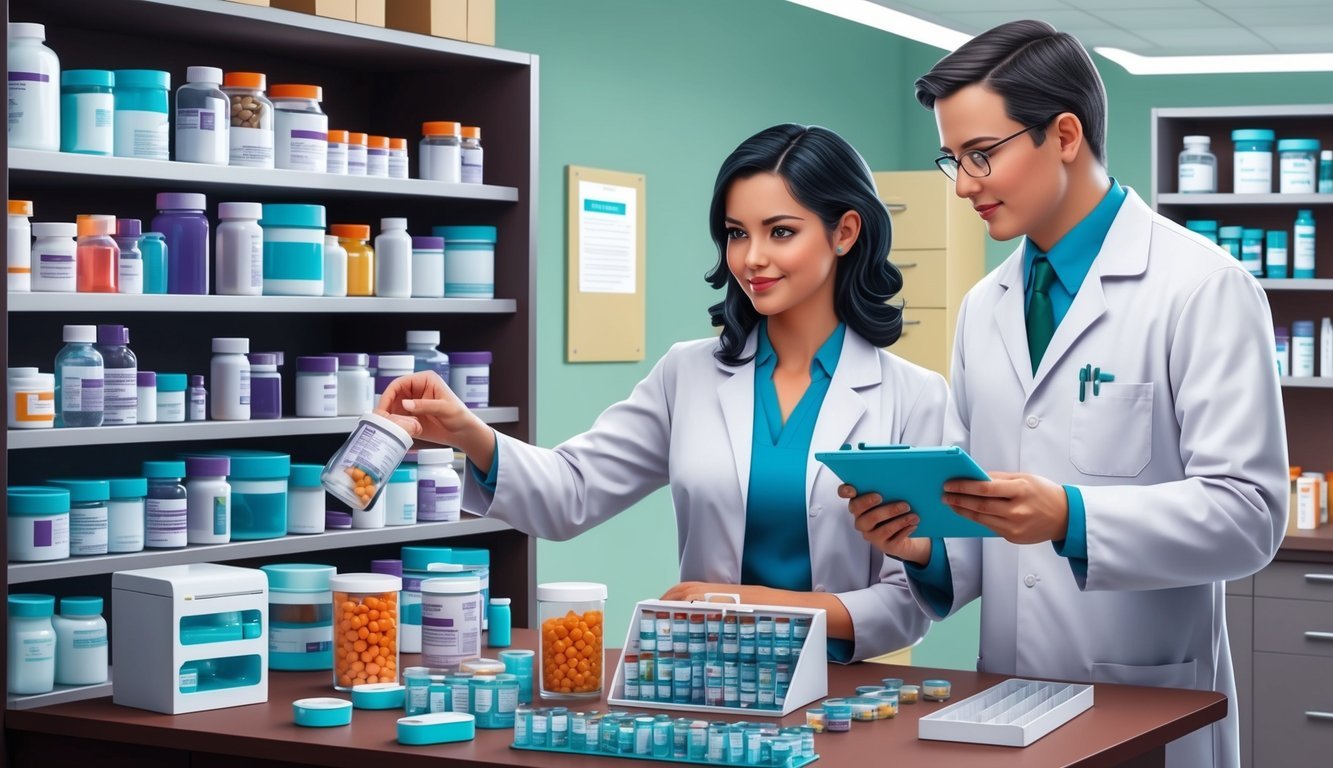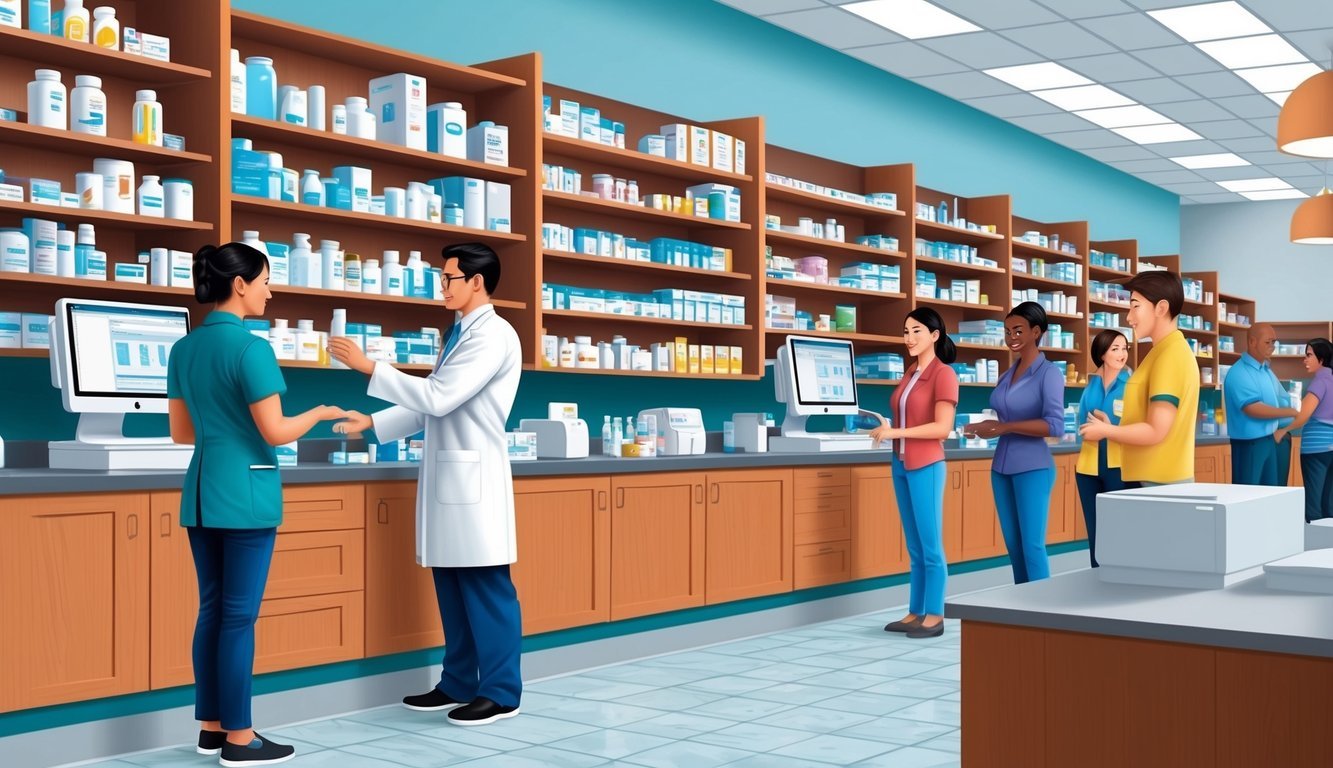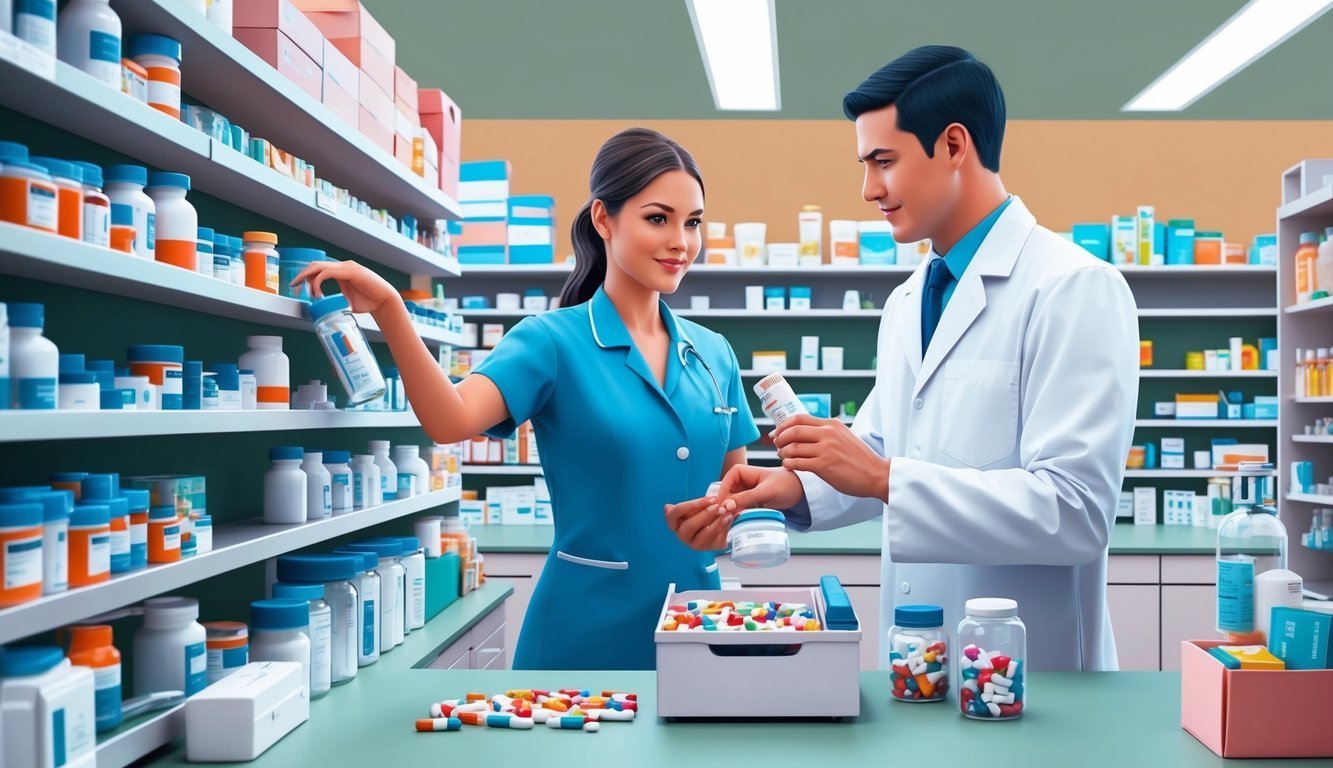When considering a career in healthcare, two roles that often come to mind are pharmacy technician and pharmacist.
While both play essential parts in the medication distribution process and patient care, the primary distinction lies in education and responsibilities.
As a pharmacy technician, you support the pharmacist by handling basic tasks, whereas a pharmacist requires a more extensive education, including a Doctor of Pharmacy (Pharm.D.) degree, to oversee patient care and provide medication therapy management.
Understanding these differences can help you make an informed decision about your career path in the pharmacy field.
If you are drawn to a job that primarily involves assisting with medication preparation and management, a pharmacy technician role may be right for you.
Conversely, if you are passionate about the medical field and want a more clinical role that involves advising patients, pursuing a career as a pharmacist could be the better option.
To explore more about the specific duties, educational requirements, and earning potential of each role, check out these detailed comparisons on Pharmacy Technician vs.
Pharmacist: What’s the Difference? and Pharmacy Technician vs.
Pharmacist: 4 Key Differences.
Roles and Responsibilities

Understanding the distinct roles and responsibilities of pharmacists and pharmacy technicians is essential.
Each professional plays a vital part in medication management and patient care, with specific duties guided by their training and legal scope of practice.
Pharmacist Duties
As a pharmacist, your primary responsibilities include patient care and safety.
You evaluate and fill prescriptions, ensuring accuracy and compliance with regulations.
This involves reviewing patient information to identify potential drug interactions and contraindications.
You also provide valuable patient counseling, educating individuals about their medications, dosage, and possible side effects.
Additionally, pharmacists administer immunizations and health screenings.
They are crucial in maintaining inventory and liaising with physicians to optimize medication therapy.
Here’s a summary of key pharmacist duties:
| Duty | Description |
|---|---|
| Filling Prescriptions | Verify and dispense medications for patients. |
| Patient Counseling | Educate patients on medication use and side effects. |
| Drug Interaction Review | Assess patient records for adverse combinations. |
| Immunizations | Administer vaccines and provide preventive care. |
Pharmacy Technician Duties
As a pharmacy technician, your role focuses on supporting the pharmacist in everyday operations.
You assist in filling prescriptions, which includes measuring and mixing medications as needed.
Customer service is also a significant aspect of your duties, as you interact with patients to gather prescription information and manage inquiries.
You help maintain an organized pharmacy environment by ensuring that medications are stored correctly and assisting with inventory management.
Key pharmacy technician responsibilities include:
| Duty | Description |
|---|---|
| Filling Prescriptions | Assist in preparing and labeling medications. |
| Customer Service | Respond to patient questions and provide assistance. |
| Inventory Management | Track and replenish medication supply. |
| Record Keeping | Maintain accurate patient and prescription records. |
Each role complements the other to ensure that patients receive safe and effective medication services.
Education and Training
The education and training required for pharmacists and pharmacy technicians differ significantly, reflecting their distinct responsibilities and roles.
Below is a closer look at the educational pathways for each profession.
Pharmacist Educational Path
To become a pharmacist, you typically need to earn a Doctor of Pharmacy (Pharm.D.) degree.
This rigorous program usually takes four years to complete after obtaining a bachelor’s degree or specific prerequisites in science and math.
Pharmacy education includes advanced courses such as pharmacology, medicinal chemistry, and pharmacotherapy.
Students also engage in hands-on experience through internships and clinical rotations in various healthcare settings.
After completing a Pharm.D., you must pass the North American Pharmacist Licensure Examination (NAPLEX) to practice as a pharmacist.
Some states may require additional examinations or certifications, further emphasizing the importance of ongoing education in the field.
Pharmacy Technician Training
Becoming a pharmacy technician generally requires a high school diploma or equivalent, followed by specialized training.
Many community colleges and vocational schools offer pharmacy technician programs that include coursework in medication management, pharmacy law, and customer service.
Certification is also crucial for pharmacy technicians.
You may choose to obtain certification from a recognized body, such as the Pharmacy Technician Certification Board (PTCB).
This credential often enhances job prospects and may be required by some employers.
Training programs typically include an internship or practical experience component, ensuring you acquire hands-on skills needed for daily tasks, like assisting pharmacists and managing inventory.
Such experiences are essential for developing competencies in a busy pharmacy environment.
Licensing and Certification
Understanding the licensing and certification requirements is crucial for both pharmacists and pharmacy technicians.
These credentials ensure that professionals are qualified to perform their roles safely and effectively.
Pharmacist Licensure
To become a licensed pharmacist, you must complete several essential steps.
Typically, you must earn a Doctor of Pharmacy (Pharm.D.) degree from an accredited institution.
After that, passing the North American Pharmacist Licensure Examination (NAPLEX) is required to assess your pharmacy knowledge.
Additionally, you may need to pass the Multistate Pharmacy Jurisprudence Examination (MPJE), which tests your understanding of pharmacy law specific to your state.
Many states also require a certain number of internship hours before granting licensure.
This combination ensures that pharmacists are well-informed and compliant with legal regulations governing pharmacy practice.
Certification for Pharmacy Technicians
For pharmacy technicians, certification is a significant milestone that enhances your employability and professional credibility.
Many technicians choose to become Certified Pharmacy Technicians (CPhT) by passing the Pharmacy Technician Certification Exam (PTCE) offered by the Pharmacy Technician Certification Board (PTCB).
To maintain certification, you need to complete continuing education requirements and renew your certification every two years.
Alternatively, the National Healthcareer Association (NHA) offers its own certification exam, providing a broader range of options for technicians.
Understanding these certification pathways is essential, as they can impact your career prospects and job responsibilities significantly.
Work Environment and Career Outlook

The work environment and career outlook for pharmacy technicians and pharmacists differ significantly.
Understanding these aspects can help you make informed career decisions based on your preferences and goals.
Workplace Settings
Pharmacy technicians and pharmacists typically work in various settings, including:
- Retail Pharmacies: Many pharmacy technicians find employment in retail environments, assisting pharmacists in dispensing medications and managing customer queries.
- Hospitals: In hospitals, pharmacy technicians may work alongside healthcare professionals, preparing and dispensing medications for patients while ensuring adherence to safety protocols.
- Healthcare Settings: Settings like outpatient clinics and long-term care facilities also employ pharmacy technicians to support medication management.
These environments require collaboration with healthcare professionals, including doctors and nurses, ensuring patients receive the correct medications.
The work can be fast-paced, especially during peak hours in retail settings.
Future Job Projections
The job outlook for both pharmacy technicians and pharmacists shows distinct trends.
Pharmacy technician roles are expected to grow by 7.2% through 2033, reflecting increasing demand in various healthcare settings.
The rise in online prescriptions may impact traditional retail pharmacy jobs, as more people turn to digital solutions.
Pharmacists, on the other hand, face slower growth projections of approximately 5.4% through 2033, partly due to evolving healthcare models and prescription fulfillment methods.
As a result, while both fields provide stable employment opportunities, the growth rate indicates different demands for each role in the job market.
For more detailed statistics on job outlook, you can explore the U.S. Bureau of Labor Statistics resources.
Salaries and Employment Statistics
Understanding the financial and employment landscape between pharmacy technicians and pharmacists is essential for career planning.
This section provides insights into salary comparisons and employment trends for both roles.
Salary Comparisons
The salary differences between pharmacy technicians and pharmacists are significant.
According to industry data, the average annual salary for pharmacy technicians is approximately $37,028.
This figure can vary based on experience and location, with the lowest-paid 10% earning around $28,740, while the highest-paid 10% can earn up to $47,580.
On the other hand, pharmacists command a much higher average salary, typically around $126,799 annually.
Here’s a brief comparison:
| Position | Average Salary | Median Salary | Salary Range |
|---|---|---|---|
| Pharmacy Technician | $37,028 | $38,270 | $28,740 – $47,580 |
| Pharmacist | $126,799 | $136,030 | Varies by experience |
For detailed salary information, visit the U.S. Bureau of Labor Statistics Pharmacy Technicians page and Pharmacists page.
Employment Trends
Employment opportunities for pharmacy technicians and pharmacists are evolving.
The job outlook for pharmacy technicians is projected to grow by 7% between 2023 and 2033.
This indicates a steady demand in retail and hospital settings.
Technicians primarily assist pharmacists in dispensing medications and handling customer inquiries.
Conversely, pharmacist employment is expected to grow by 5% during the same period.
While this growth aligns with the average for all occupations, the requirements are more rigorous.
Every state mandates a Doctor of Pharmacy (Pharm.D.) degree and licensure.
For current employment statistics, you can refer to the U.S. Bureau of Labor Statistics on Pharmacy Technicians and Pharmacists.

